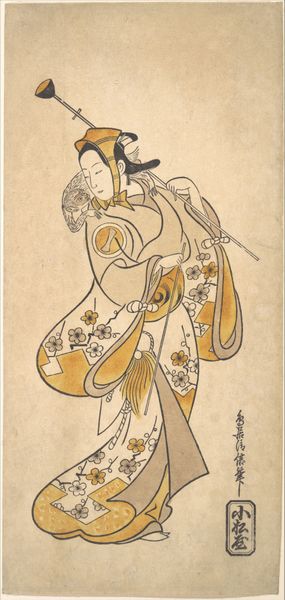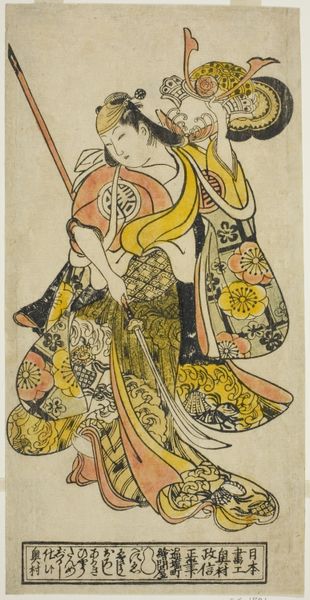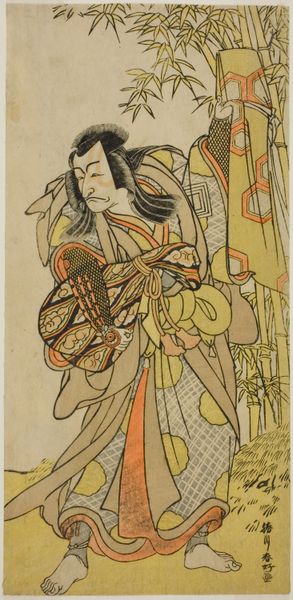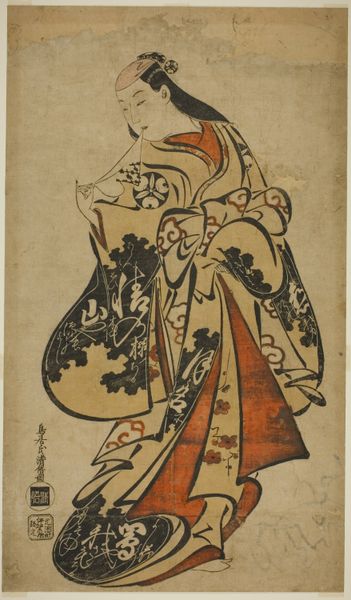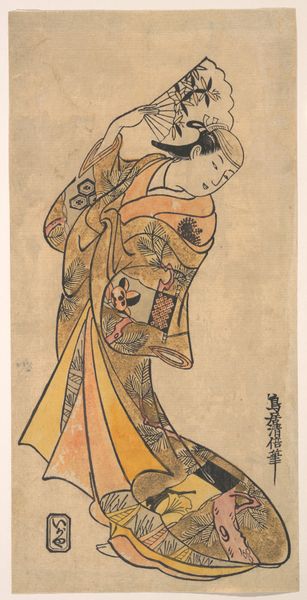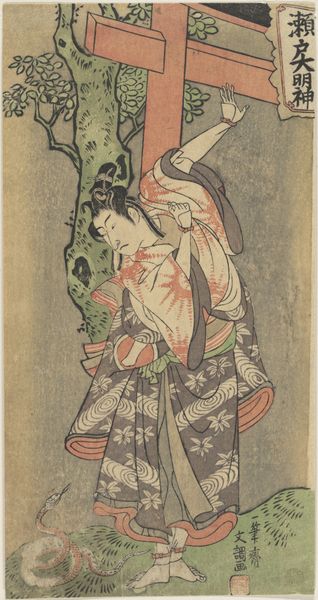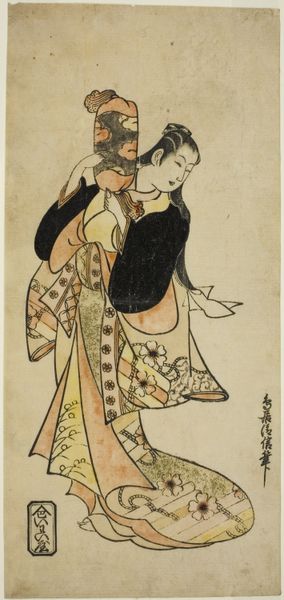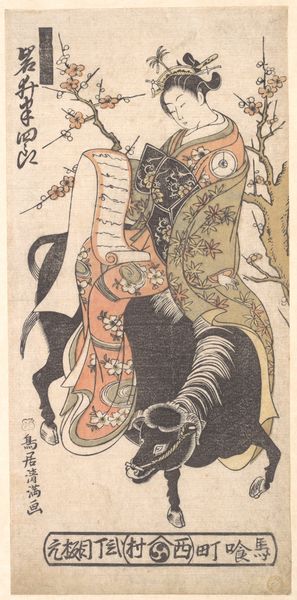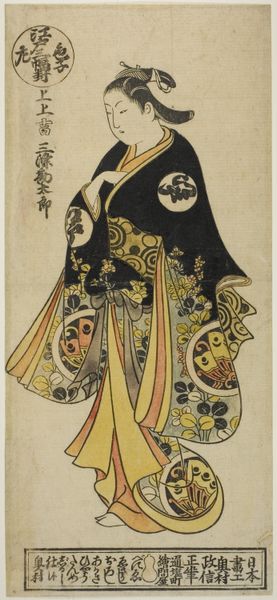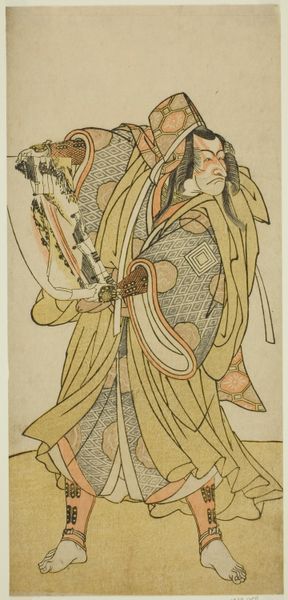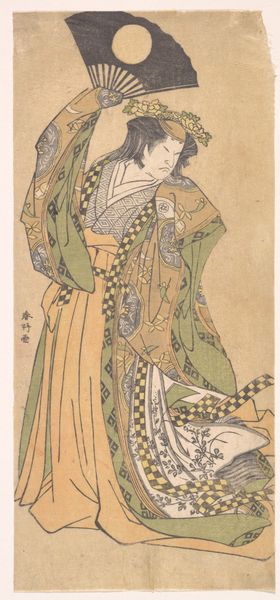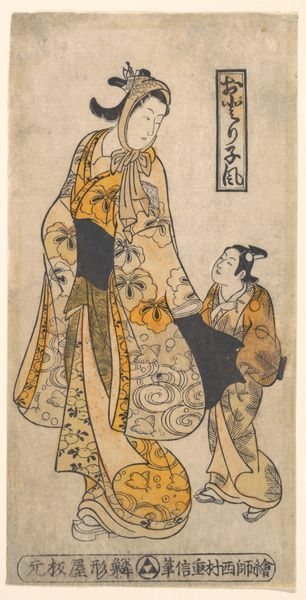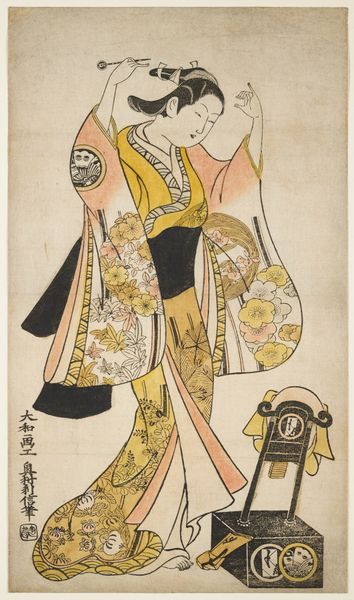
The Actor Segawa Kikunojo, 1690–1749 with Drawn Sword and Helmet 1697 - 1756
0:00
0:00
print, woodblock-print
#
portrait
# print
#
asian-art
#
ukiyo-e
#
figuration
#
woodblock-print
#
cartoon carciture
Dimensions: H. 10 5/8 in. (27 cm); W. 6 1/8 in. (15.6 cm)
Copyright: Public Domain
Curator: Looking at this print, I immediately sense a kind of subdued drama, don’t you think? The soft colors, the figure gazing downward... it’s a warrior on stage, but the intensity feels very internalized. Editor: Indeed! The piece is by Nishimura Shigenaga, and it depicts the actor Segawa Kikunojo I between 1697 and 1756. We find Segawa mid-performance, striking a mie pose, and caught between taking on a helmet with one hand and grabbing at the drawn katana. Curator: Right, he is presenting Kikunojo at the height of his fame. It’s intriguing how Shigenaga utilizes what appears to be a melancholic approach, while the Kabuki printmaking genre that this work falls under would celebrate the spectacle. Is that right? Editor: That is indeed an intriguing element to consider. In many ways, it complicates our understanding of both the performative nature of the Kabuki theatre and, of course, this period in Japanese art. Here we find the tension between the subject's masculine trappings–the sword, the helmet–with what seems a rather despondent attitude. It makes me question the artist’s intention and reflect on how Segawa’s interpretation sought to highlight the contrast between public performance and perhaps private contemplation. Curator: I love the texture Shigenaga creates with the woodblock technique; the floral patterns on the robe and the subtle shading add such depth. One might see in this composition an exploration of identity—specifically, the negotiation of gender and power. As a female role specialist, onnagata, how might Segawa challenge expectations with a sword? Editor: Yes! Thinking about Kabuki through our modern lens is rewarding. We should recall the context of Edo Japan with rigidly prescribed roles and then look closely at Shigenaga's sensitive attention to costuming to glean any hint as to how Kabuki may, or may not, reflect the complex realities of the culture it reflects. What does it mean for the construction of gender roles within performance when an actor must always negotiate what they actually bring to any role? Curator: Precisely, It's so refreshing how such an old piece invites very pertinent social queries on topics still relevant today. What's more powerful than the fact that a print from centuries ago offers fresh insights and provokes ongoing debate. Editor: Totally, and that makes our work endlessly fun!
Comments
No comments
Be the first to comment and join the conversation on the ultimate creative platform.
